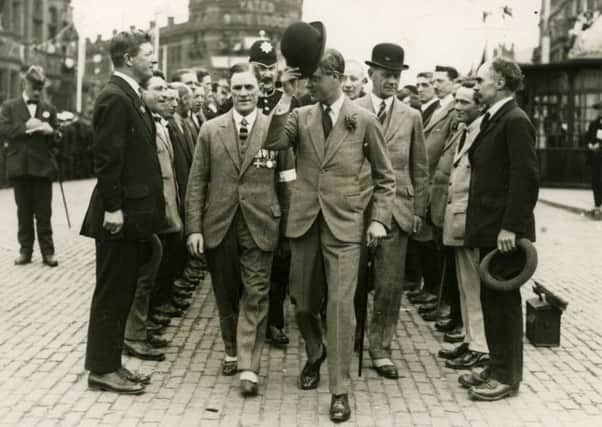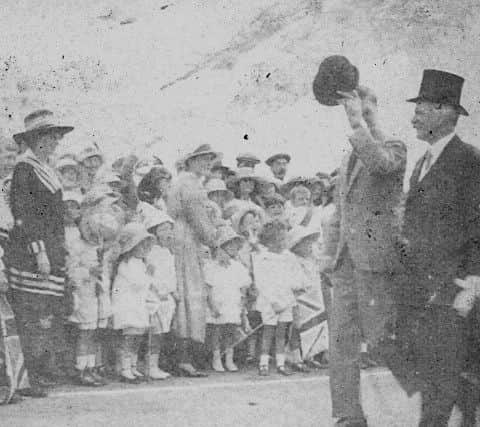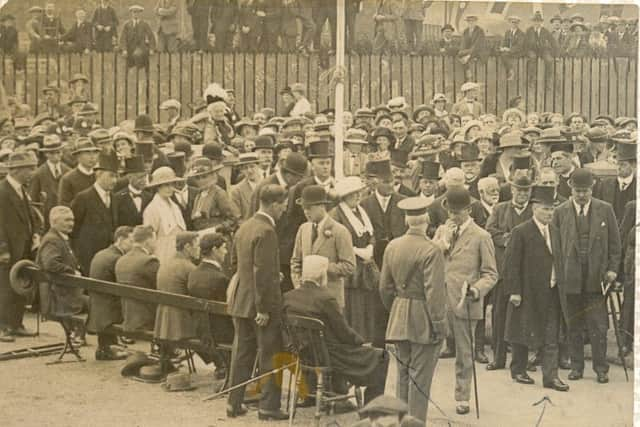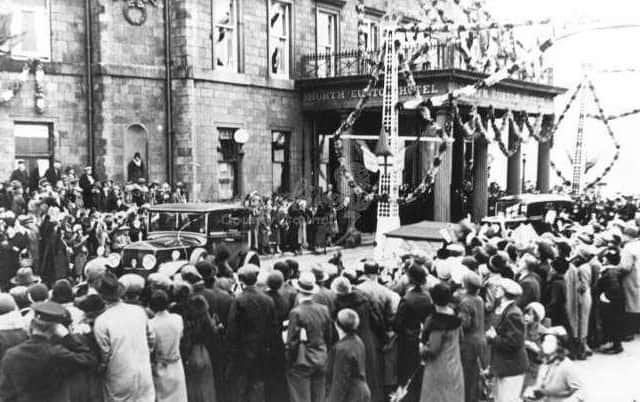How port geared up for a right royal visit


For the second time in Fleetwood’s history, a member of the Royal family would be gracing the town.
Prince Edward of Wales would be making a whistle-stop tour of Fleetwood, Rossall, Cleveleys, Blackpool, St Annes and Lytham and was due to arrive on July 8.
Advertisement
Hide AdAdvertisement
Hide AdThe plans were rushed into place by the welcoming committee and the Prince’s Officials.


The prince would spend the night before at Mowbreck Hall, in Kirkham and Wesham – the home of Lord Derby’s Fylde Estate Agent Mr Wyndham, before travelling by railway to Fleetwood.
Upon arrival, HRH would be greeted by a Fleetwood committee including Councillor WE Simpson, chairman of the Fleetwood Council and uncle of future Mayoress Mrs Margaret Rowntree.
The Fleetwood detachment of the King’s Own Territorial’s – under the command of Captain Charles Saer – would act as his bodyguards and the splendid Battalion band from Lancaster were commissioned to play outside the station.
Advertisement
Hide AdAdvertisement
Hide AdThe Prince would then walk the 200 yards down from the railway station to Euston Park, and it was planned that along this route would be where the children of the town would amass. There were also plans for a parade of ex-servicemen, sailors, soldiers; with officers and men who have particularly distinguished themselves, and earned decorations to be placed near the front so as to be easily presented to HRH, should the occasion arise.


Leaving the park by the Bold Street gate, the Prince would then be driven to Rossall by one of two routes, either down the promenade, or down North Albert Street, to Lord Street, then via Poulton Road to Rossall.
All ex-servicemen, belonging to either the comrades or the federation or neither, were requested to assemble at the Drill Hall in Preston Street, 45 minutes before the Prince was due to arrive. Any man who had gained distinction must notify the chairman so they could be put into their appointed places in the parade.
The annual prize day at Rossall School was postponed when the Prince’s visit was announced, and moved two days to correspond with the visitor. HRH was to be expected at 11am at Rossall – where he would inspect the Officers Training Corps, who would be drawn up on the cricket pitch.
Advertisement
Hide AdAdvertisement
Hide AdThose Over-Wyre were keen for their children to also enjoy the visit from the Prince and so plans were underway to bring the children over for the festivities. One suggestion was the use of the steamer; another was asking for public donations to cover the toll for the children to arrive by ferry, but this second suggestion worried some, as the ferry would already be busy with adult passengers also coming over hoping for a glimpse of the Prince.


It was arranged the children from Preesall, Hambleton, Stalmine and Pilling would be brought to Knott End in charabancs. Once in Fleetwood, they would be amassed in the space between the Railway Station and the Ferry.
At least one Fleetwood man understood the significance of the Prince’s visit and sent a letter, which was also printed in the Chronicle, to the advisors of the Prince.
Mr G Bond, of 44 Carr Road wrote, requesting the Prince take some time to meet with a delegate of Fleetwood’s unemployed men. All were ex-servicemen who were desperate for work, and were continuously unsuccessful in obtaining positions.
Advertisement
Hide AdAdvertisement
Hide AdMr Bond was hoping to ask the Prince for his influence in encouraging the Fleetwood Town Council to confirm the beginning of work to the new Fleetwood Foreshore, which had been in planning. This venture, Mr Bond estimated, would create between 300 and 400 jobs. The employment exchange scheme which Mr Bond was a part of had already been able to place 40 men into employment, but he hoped the new foreshore scheme could greatly increase that number.


The letter was signed by Mr Bond, Royal Garrison Artillery Gunner, Mr H Ware – also a gunner with the RGA, Mr J Ronson, a Private with the Border Regiment, Mr G Brooks, and Mr J Gibbons, both Privates with the Royal Engineers, and Mr D Mortimer of the Royal Naval Reserve.
On July 1, a meeting led by Councillor Simpson, Lord Derby and Mr A Cottam the clerk, settled all the arrangements – until an official timetable of events arrived from the Prince’s secretary, which listed the Prince’s arrival time as 15 minutes earlier and all Fleetwood’s plans had to be adjusted. Even so, all were delighted the Prince was honouring the town with the visit, and also the chance for the people to meet with him during procession on foot to the park.
An estimated 3,500 school children were expected and would be lined up, from the entrance to the railway station to the Bold Street Entrance of the park. The children would attend lessons as normal on the Friday morning, and then their teachers would marshal them over to Euston Park. They were also to be given the afternoon off as a holiday in honour of the event, and sports and games would be held at Warrenhurst Park for the children.
Advertisement
Hide AdAdvertisement
Hide AdThe ex-servicemen were to be placed in front rank, on the grass on the riverside of the park, so some could be introduced to the Prince. The Fleetwood Comrades Band would also be in attendance.
Once finished at the park, the Prince would leave by the North Albert Street Entrance, and from there, a motor vehicle would transport him and his entourage in procession along North Albert Street, Lord Street, Poulton Street, Poulton Road and then past the Queen’s Hotel to Rossall. The motor vehicles were to arrive the day before the visit in preparation.
The expected duration of the visit was to be between 20 minutes and half an hour. All households and businesses along the parade route were asked to decorate their premises, although costly elaborateness was not expected.


The tight timeframe for the visit was for the Prince to include stops at Fleetwood at 11am, Rossall School at 11.20am, Cleveleys at 11.30am, Blackpool at noon, St Annes at 1.25pm and Lytham at 1.35pm.
Advertisement
Hide AdAdvertisement
Hide AdThen, plans in place – there was nothing to do but wait and anticipate.
Yet there was nothing to fear, the review of the Royal visit was a glowing one.
The town was described as “proud and happy” that for the second time in 74 years royalty had chosen it as the gateway to the Fylde.
“The Wyre port has long been waiting to demonstrate its loyalty and affection to the heir to the throne,” the newspaper proclaimed.
Advertisement
Hide AdAdvertisement
Hide AdThe prince was described as “radiating happiness and optimism” where-ever he went, with his unaffected style and democratic air winning the hearts of all. His frank and engaging manners, and his consideration and solicitude for the welfare of all was said to have endeared him to all classes.
• Find out more about the Prince’s visit next week.